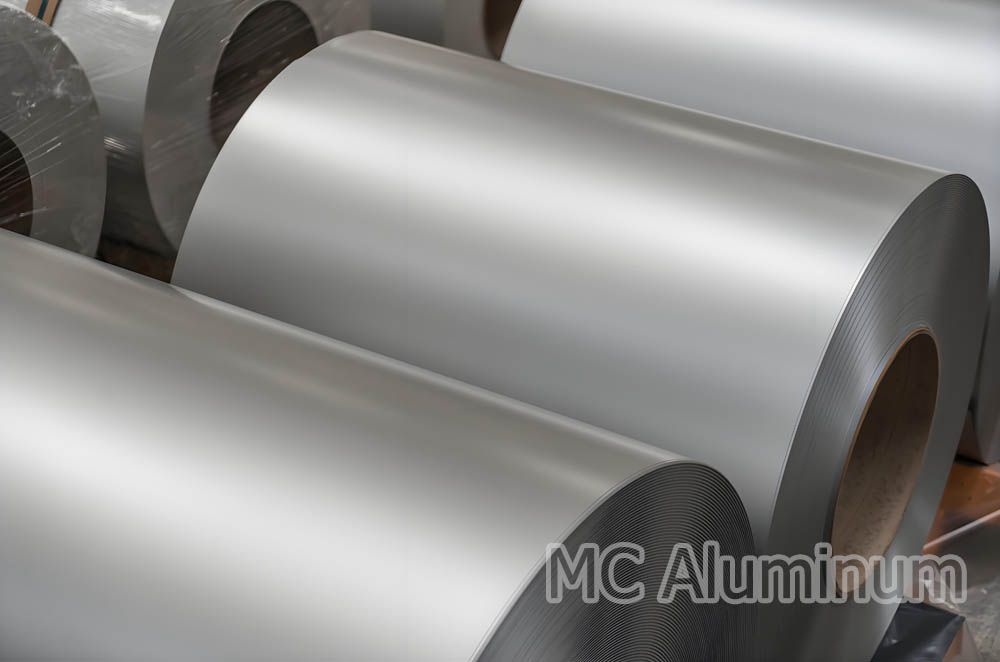Matte aluminum foil is a type of aluminum foil material with a non-glossy surface, produced through special rolling and surface treatment processes. Its unique matte texture provides distinctive visual and practical performance, making it widely used in packaging, decoration, electronics, automotive, and other fields.
Material Introduction:
Matte aluminum foil is typically made from high-purity aluminum or aluminum alloys (such as 8011, 1235, 3003, etc.). Through hot rolling, cold rolling, annealing, and special surface treatment processes, it gains a matte texture and excellent physical properties. To further enhance corrosion and oxidation resistance, matte aluminum foil may undergo anodizing or coating protection treatment.

Specifications and Parameters of Matte Aluminum Foil:
| Alloys | 8011, 1235, 3003, etc. |
| Temper | O-temper, H18, H22, H24, etc. |
| Thickness | 0.006mm - 0.2mm |
| Width | Range: |
| Length | C |
| ID | 76mm, 152mm |
| Surface Treatment | Embossing, coating, oxidation treatment |
Advantages of Matte Aluminum Foil:
1. Low Reflectivity: The matte surface effectively reduces glare, suitable for environments with strict light pollution requirements.
2. Excellent Light Blocking: Effectively blocks light and gases, ensuring the freshness of packaged contents.
3. Corrosion Resistance: Special surface treatment provides excellent oxidation and corrosion resistance.
4. Strong Processability: With good ductility and flexibility, it is easy to stamp, bend, and perform composite processing.
5. Premium Texture: The matte effect brings an elegant and upscale visual experience, meeting the needs of high-end packaging and decoration.
Application Fields:
Packaging Industry: Used for food, pharmaceutical, and cosmetic packaging to provide moisture-proof, anti-oxidation protection and extend shelf life.
Electronics and Electrical Appliances: Used as cable wrapping and electromagnetic shielding material to reduce reflection and interference.
Architectural Decoration: Applied as exterior wall or interior decorative material, offering a unique texture and durability.
Automotive Manufacturing: Used for interior panels and trim strips to enhance texture and reduce reflective interference.
Labels and Nameplates: Used for high-end labels and nameplates, presenting a low-key and luxurious appearance.
Matte Aluminum Foil vs. Glossy Aluminum Foil
1. Surface Characteristics:
Matte Aluminum Foil: Rough, non-glossy surface with good anti-slip and non-stick properties.
Glossy Aluminum Foil: Smooth surface with high reflectivity, effectively reflecting heat.
2. Processing Performance:
Matte Aluminum Foil: Good flexibility and strong corrosion resistance.
Glossy Aluminum Foil: Excellent reflective performance, easy to polish.
3. Application Scenarios:
Matte Aluminum Foil: Suitable for food packaging, especially frozen food and situations requiring anti-adhesion. In the medical field, it is used to make adhesive tapes, enhancing the adhesion of medicines.
Glossy Aluminum Foil: Suitable for baking and roasting, reflecting heat evenly and helping food cook uniformly.
4. Performance Comparison:
Reflectivity: Glossy aluminum foil has higher reflectivity, ideal for cooking scenarios that require moisture and heat retention. Matte aluminum foil has lower reflectivity, suitable for packaging applications that need anti-adhesion.
Thermal Conductivity: Although both have similar thermal conductivity, glossy aluminum foil is more suitable for cooking processes requiring even heating.
5. Usage Recommendations:
Matte Aluminum Foil: Recommended for food packaging, especially for situations requiring anti-adhesion and anti-slip properties.
Glossy Aluminum Foil: Recommended for baking and roasting, effectively reflecting heat and helping food cook evenly.
